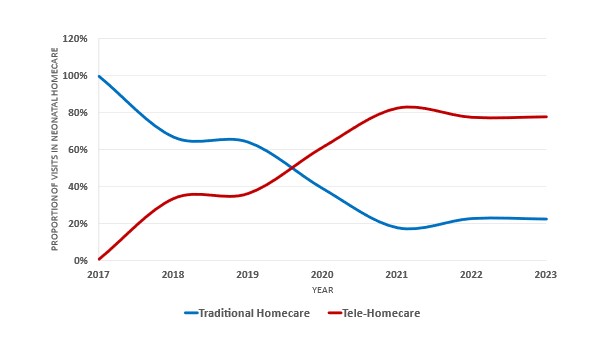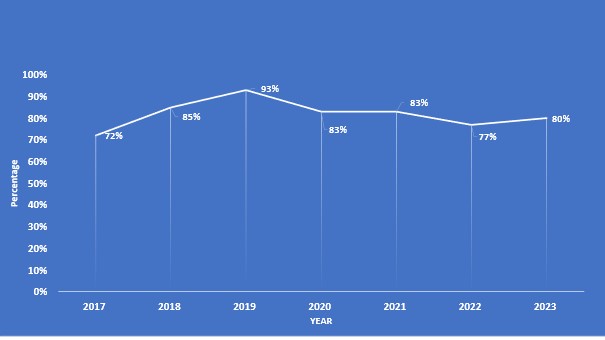Neonatal Quality Improvement 5
Session: Neonatal Quality Improvement 5
519 - Neonatal Tele-Homecare: Shorter Inpatient Care Without Affecting Breastfeeding Rates
Saturday, April 26, 2025
2:30pm - 4:45pm HST
Publication Number: 519.5784
Margret Johansson Gudjonsdottir, Sahlgrenska Universitetssjukhuset, Mölndal, Vastra Gotaland, Sweden; Dorota Marta. Försth, Queen Silvas Children's Hospital, Gothenburg, Vastra Gotaland, Sweden

Margret Johansson Gudjonsdottir, MD, PhD (she/her/hers)
Head of Section, Consultant
Sahlgrenska University Hospital
Mölndal, Vastra Gotaland, Sweden
Presenting Author(s)
Background: Neonatal homecare empowers parents of clinically stable preterm infants to manage tube feeding and establish oral feeding at home, supported by the neonatal unit. Tele-homecare with video-conferencing facilitates ongoing breastfeeding support, helping parents establish and maintain breastfeeding practices. It has proven cost-effective compared to traditional homecare, with families reporting high levels of satisfaction due to the convenience it offers. Since its implementation in 2018, the use of tele-homecare surged during the COVID-19 pandemic, leading to a significant shift toward telehealth, with 80% of visits now conducted remotely.
Objective: To evaluate whether tele-homecare is non-inferior to conventional homecare in terms of inpatient day cases, growth, and breastfeeding rates.
Design/Methods: Data on inpatient day cases, growth, and breastfeeding rates were collected from the Swedish Neonatal Quality Register (SNQ) for patients admitted to the neonatal homecare unit at Queen Silvas Children's Hospital from 2017 to 2023. A total of 1418 admissions were analyzed, comprising 593 from 2017-2019 and 616 from 2021-2023. The year 2020, which included 209 admissions, was excluded as a transition period. Analyses were performed using SPSS version 28.
Results: • Demographics: The mean gestational age remained stable at 32.5 weeks (95% CI [32.3, 32.7]) across both periods. Mean birth weight was comparable: 1954g (95% CI [1911, 1996]) in 2017-2019 and 1930g (95% CI [1886, 1973]) in 2021-2023.
• Inpatient Days: A significant reduction in mean inpatient day cases was observed, decreasing from 20.2 (95% CI [19.6, 20.9]) to 17.7 (95% CI [17.0, 18.3]).
• Weight Gain: Weight gain percentages decreased from 28.9% to 21.5%.
• Breastfeeding Rates: Breastfeeding rates at discharge were 81.6% in 2017-2019 compared to 74.8% in 2021-2023; however, this decline did not reach statistical significance.
Conclusion(s): Tele-homecare demonstrates non-inferiority to conventional homecare, achieving shorter inpatient days without negatively impacting breastfeeding rates. The observed decline in weight gain percentages may be related to fewer inpatient days and warrants further investigation, particularly in light of the trend toward lower breastfeeding rates. Not all aspects of neonatal care can be managed remotely; certain conditions still necessitate in-person visits. Future studies should explore the factors influencing these outcomes and aim to enhance the effectiveness of tele-homecare in supporting infants and their families.
Transition from Traditional Neonatal Homecare to Tele-Homecare

Mean Weightgain in Neonatal Homecare
.jpg)
Breastfeeding Rates at Discharge from Neonatal Homecare


